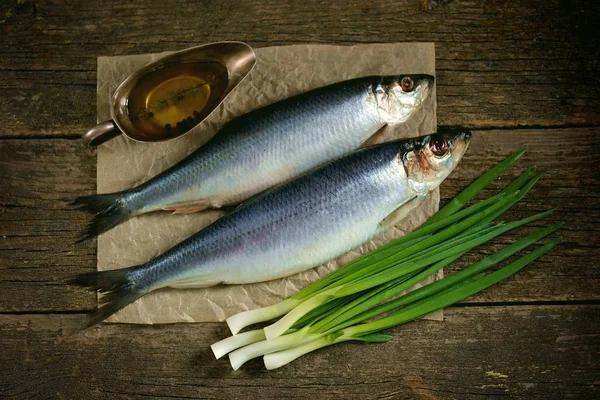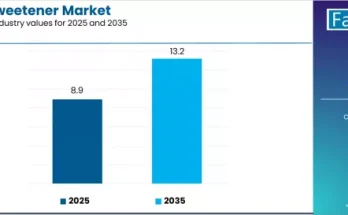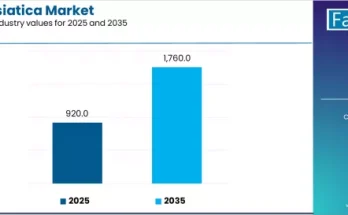Herring, one of the most widely consumed small fish species globally, has long been valued for its rich nutritional profile, affordability, and versatility across culinary traditions. Today, the global herring market is experiencing renewed attention due to rising consumer awareness about healthy seafood choices, the push for sustainable marine resources, and advancements in fish processing technologies. As sustainability, convenience, and nutrition continue to influence buying behavior, the herring industry is advancing steadily with promising growth prospects.
Herring has been a dietary staple in many regions for centuries, especially across Europe, where it holds cultural and culinary significance. Its popularity is now spreading to newer markets, driven by evolving eating habits, increased seafood consumption, and the availability of value-added products. With rising global demand for lean protein and omega-3-rich foods, herring is becoming an appealing option for health-conscious consumers and retailers looking to diversify seafood offerings.
The global herring market is supported by multiple factors, including sustainable fishing practices, greater emphasis on traceability, improved cold-chain logistics, and a surge in ready-to-eat seafood products. Together, these dynamics are creating a strong foundation for consistent market expansion in the foreseeable future.
Market Overview
The herring market comprises fresh, frozen, canned, pickled, smoked, and value-added products that cater to both domestic and international consumers. Herring is also widely used in fishmeal production, pet food, and aquaculture feed, contributing to diverse commercial applications.
Key market segments include:
- By Product Type: Fresh, frozen, pickled, smoked, canned, and processed herring
- By Catch Type: Wild-caught and aquaculture-produced
- By End Use: Household consumption, foodservice, industrial use (feed and fishmeal)
The market is also shaped by rising investments in modern processing facilities, innovative packaging, and strategic partnerships among seafood processors.
Key Market Drivers
- Rising Health Awareness
Herring is rich in omega-3 fatty acids, vitamin D, selenium, and high-quality protein. As consumers increasingly prioritize functional foods that support heart health, immunity, and overall wellness, demand for nutrient-dense seafood is rising. Herring’s nutritional benefits make it a preferred choice among those seeking affordable yet healthy food options.
- Growing Focus on Sustainable Seafood
Sustainability has become a defining factor in seafood purchasing decisions. Herring fisheries are often managed under strict quotas to prevent overfishing, making them more sustainable than many other species. Certification programs, traceable supply chains, and eco-friendly fishing methods are boosting consumer confidence and enhancing market credibility.
- Expansion of Ready-to-Eat and Value-Added Products
Modern consumers prefer convenient, easy-to-cook foods due to fast-paced lifestyles. This trend is driving demand for herring-based products such as:
- Smoked herring
- Pickled herring
- Marinated fillets
- Canned herring
- Flavored spreads and pâtés
These formats appeal to younger consumers and urban populations who may not have traditional familiarity with whole fish but appreciate flavor-rich, ready-to-serve options.
- Technological Advancements in Processing
Improvements in fish freezing techniques, vacuum packaging, cold storage, and logistics are enabling producers to maintain product freshness and expand distribution networks. Flash-freezing and innovative preservation methods also help increase shelf life, reduce waste, and ensure consistent supply throughout the year.
- Increasing Demand from Asia-Pacific
While herring has historically dominated European cuisine, it is now gaining traction in Asia-Pacific due to rising seafood imports, changing dietary patterns, and expanding cold-chain infrastructure. Countries such as China, Japan, and South Korea are showing increasing interest in both fresh and preserved herring products.
Regional Insights
Europe
Europe remains the largest and most mature market for herring. Countries such as the Netherlands, Germany, the UK, and the Nordic nations have long-standing consumption traditions. Growing preference for sustainably sourced seafood and premium pickled and smoked varieties continues to support steady demand.
North America
The North American market is expanding as consumers show more interest in high-omega-3 seafood and artisanal preserved fish products. Specialty stores, ethnic markets, and gourmet food channels are driving increased consumption of pickled and smoked herring.
Asia-Pacific
Asia-Pacific is emerging as a strong growth region driven by rising seafood consumption, expansion of retail distribution networks, and the introduction of new product formats tailored to regional preferences.
Oceania
Australia and New Zealand are witnessing a rise in demand for sustainable, clean-label seafood products. Herring-based delicacies are especially popular in gourmet retail and foodservice channels.
Challenges Restraining Market Growth
Despite positive growth indicators, the herring market faces certain challenges:
- Fluctuating Fish Stocks
Climate change, breeding patterns, and ocean temperature shifts influence herring populations. Variability in supply can affect pricing and market stability.
- Price Sensitivity
Herring is traditionally positioned as an affordable fish. Any increase in operational or logistics costs may impact consumer demand in price-sensitive markets.
- Competition from Other Fish Species
Alternative fish like sardines, mackerel, and salmon compete with herring in both fresh and processed categories. Effective branding and product differentiation remain essential for market growth.
- Limited Awareness in Some Regions
In certain markets, consumers are unfamiliar with herring’s taste, preparation, or health advantages. Awareness campaigns, recipe innovation, and influencer-driven marketing can help expand adoption.
Future Outlook
The future of the herring market looks promising as global consumers increasingly embrace sustainable and nutritionally rich seafood. Growth will be supported by:
- Expansion of ready-to-eat and gourmet product lines
- Rising preference for eco-certified seafood
- Broader distribution through online retail and modern trade
- Innovations in packaging and preservation
- Awareness efforts highlighting health benefits
As companies continue investing in sustainable practices, value-added processing, and advanced logistics, the herring market is well-positioned to achieve steady long-term growth.
Browse Full Report – https://www.factmr.com/report/2078/herring-market



